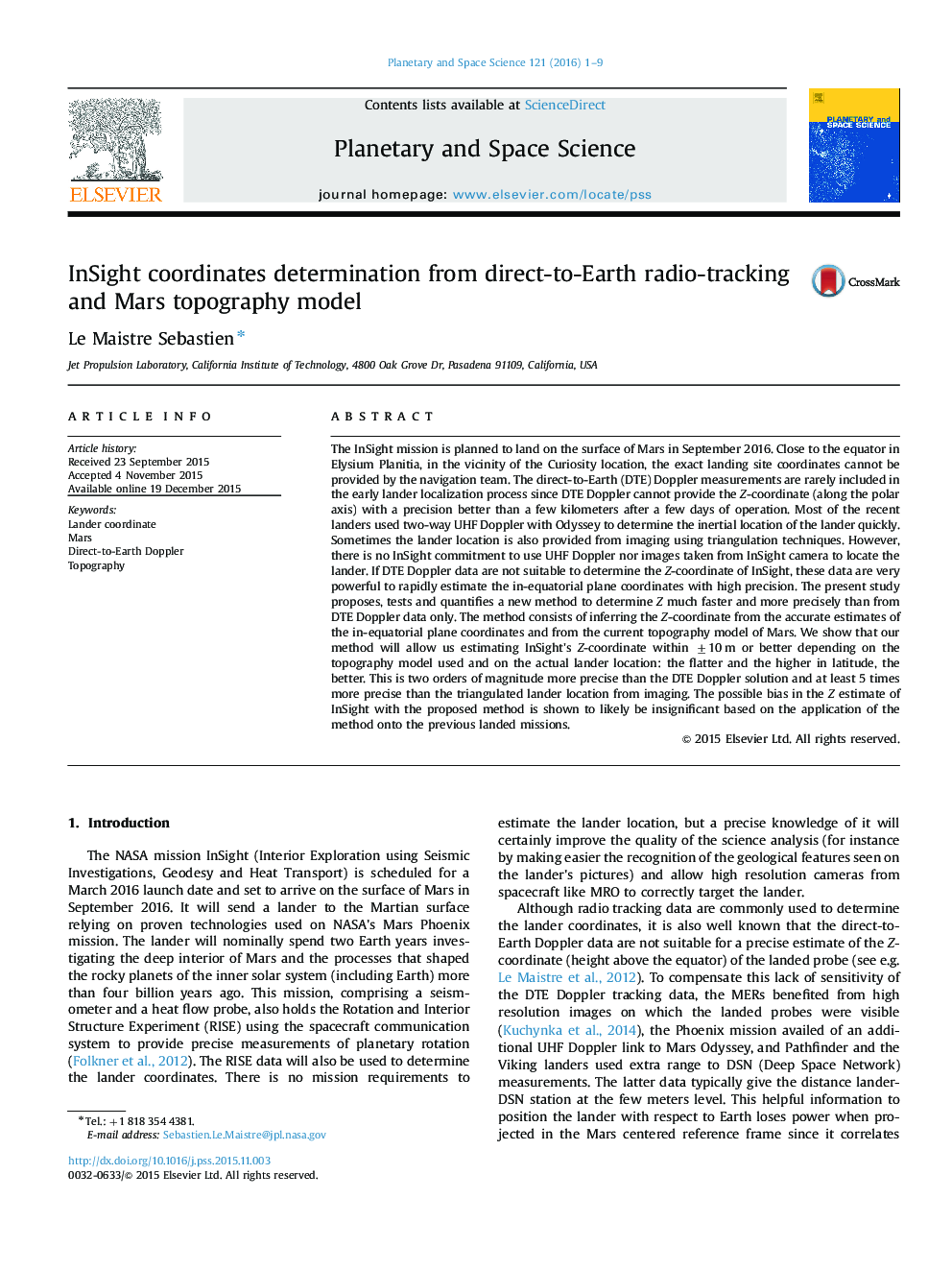| کد مقاله | کد نشریه | سال انتشار | مقاله انگلیسی | نسخه تمام متن |
|---|---|---|---|---|
| 8142799 | 1523919 | 2016 | 9 صفحه PDF | دانلود رایگان |
عنوان انگلیسی مقاله ISI
InSight coordinates determination from direct-to-Earth radio-tracking and Mars topography model
دانلود مقاله + سفارش ترجمه
دانلود مقاله ISI انگلیسی
رایگان برای ایرانیان
کلمات کلیدی
موضوعات مرتبط
مهندسی و علوم پایه
علوم زمین و سیارات
فیزیک زمین (ژئو فیزیک)
پیش نمایش صفحه اول مقاله

چکیده انگلیسی
The InSight mission is planned to land on the surface of Mars in September 2016. Close to the equator in Elysium Planitia, in the vicinity of the Curiosity location, the exact landing site coordinates cannot be provided by the navigation team. The direct-to-Earth (DTE) Doppler measurements are rarely included in the early lander localization process since DTE Doppler cannot provide the Z-coordinate (along the polar axis) with a precision better than a few kilometers after a few days of operation. Most of the recent landers used two-way UHF Doppler with Odyssey to determine the inertial location of the lander quickly. Sometimes the lander location is also provided from imaging using triangulation techniques. However, there is no InSight commitment to use UHF Doppler nor images taken from InSight camera to locate the lander. If DTE Doppler data are not suitable to determine the Z-coordinate of InSight, these data are very powerful to rapidly estimate the in-equatorial plane coordinates with high precision. The present study proposes, tests and quantifies a new method to determine Z much faster and more precisely than from DTE Doppler data only. The method consists of inferring the Z-coordinate from the accurate estimates of the in-equatorial plane coordinates and from the current topography model of Mars. We show that our method will allow us estimating InSight׳s Z-coordinate within ±10 m or better depending on the topography model used and on the actual lander location: the flatter and the higher in latitude, the better. This is two orders of magnitude more precise than the DTE Doppler solution and at least 5 times more precise than the triangulated lander location from imaging. The possible bias in the Z estimate of InSight with the proposed method is shown to likely be insignificant based on the application of the method onto the previous landed missions.
ناشر
Database: Elsevier - ScienceDirect (ساینس دایرکت)
Journal: Planetary and Space Science - Volume 121, February 2016, Pages 1-9
Journal: Planetary and Space Science - Volume 121, February 2016, Pages 1-9
نویسندگان
Le Maistre Sebastien,